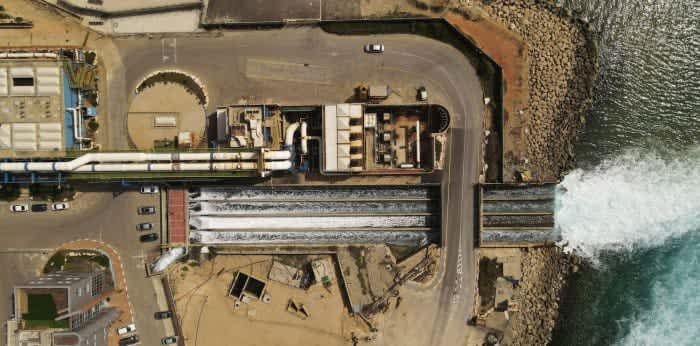Bangkok, Krungthai COMPASS Research Center estimates that 40 million foreign tourists will travel to Thailand, the same as before the COVID-19 outbreak, supporting Thai tourism revenue to reach 3 trillion baht in 2025, along with revealing 6 new tourism trends to attract high-spending potential tourists, helping to create added value for the Thai tourism sector of no less than 135 billion baht. Mr. Patcharapoj Nantramas, Assistant Managing Director of Krungthai Bank, revealed that the tourism sector, which is a key engine of the Thai economy, has shown clear signs of recovery. It is expected that in 2024, the number of foreign tourists will reach 36.5 million and in 2025, it will reach the same level as before COVID-19 at 40 million. Although Chinese tourists have recovered lower than before COVID-19 by 65%-90%, they have been supported by the growth of major tourist groups such as Malaysia, India, Russia, and South Korea, as well as tourists from Europe and the Middle East. As a result, total tourism reven ue in 2024-2025 is worth approximately 2.65-3 trillion baht. Although the revenue is still concentrated in major tourist cities, the distribution of revenue to secondary provinces has begun to show signs of improvement. In the first half of 2024, it accounted for approximately 13.4% of total tourism revenue, an increase from before COVID-19. With a proportion of only 9.2%, the top 5 secondary cities are Suphan Buri, Samut Songkhram, Chiang Rai, Chanthaburi and Udon Thani, with the number of tourists recovering higher than the pre-COVID period at a level of 130%-343%, reflecting that both Thai and foreign tourists are more interested in traveling to secondary provinces. Suphan Buri is considered a secondary province with the highest number of tourists at 3.4 million, Samut Songkhram 3.3 million and Chiang Rai 2.9 million. Mr. Thana Tulayakawat, an analyst at Krungthai COMPASS Research Center, said that tourist behavior has changed from the pre-COVID period, which focused on mass tourism to more specific types of tourism, combined with the soft power policies that the government has been continuously pushing for, both in terms of Thai food and historical tourism, resulting in a new tourism trend that has the opportunity to create added value for the Thai tourism sector of more than 135 billion baht, consisting of: 1. Gastronomy Tourism, especially street food, which has increased in popularity among international tourists by 18.1% compared to pre-COVID period. 2. Cultural Tourism, such as the recent Songkran Festival, which welcomed 780,000 tourists, generating 2.88 billion baht in revenue. 3. Film Tourism: Most recently, after the release of Lisa's "ROCKSTAR" music video, many tourists went to take photos and check in on Yaowarat Road. Meanwhile, the trends of saving the world, taking care of one's health, and entering an aging society have given rise to new interesting tourism trends, namely: 4. Sustainable Tourism. According to a survey by Booking.com, three out of four new-age tourists want to travel sustainab ly in the next 12 months. 5. Digital Nomad Tourism is a group with potential that can grow in line with the trend of "Workcation", a new form of working in the modern world that is playing an increasingly important role and has an average spending per person almost twice as high as general tourists. 6. Wellness Tourism that has the opportunity to grow along with the number of elderly people. and the behavior of people around the world who are turning to take care of their health more. After the first half of 2024, there have been 17.5 million foreign tourists traveling to Thailand, the most of which are Chinese tourists at 3.44 million, Malaysia at 2.44 million, India at 1.04 million, South Korea at 0.93 million, and Russia at 0.92 million. The top 3 provinces that foreign tourists like the most are Bangkok, Chonburi, and Phuket. The spending per person while staying in Thailand is 45,568 baht per person, slightly lower than during COVID, when tourists spent 47,895 baht per person during COVID. Ms. Weeraya Thongsue, an analyst at Krungthai COMPASS Research Center, added that Thai entrepreneurs should adapt themselves to seize opportunities from new tourism trends as follows: 1. Adjust product and service formats to meet the specific needs of tourists, such as hotel businesses improving their accommodations to meet Green Hotel standards or joining the Sustainable Tourism Acceleration Rating (STAR) project to support nature-loving tourists, and 2. Use technology in their business operations, such as restaurants, which may use automated robots to help serve food to reduce the impact of labor shortages. In addition, it is proposed that the government consider tourism promotion policies, focusing on 1. Penetrating the high-potential tourist market by possibly increasing health insurance options for the Digital Nomad group who apply for the Destination Thailand Visa Revealed (DTV). 2. Promoting year-round travel trends, especially in secondary cities, by linking with the Wellness Tourism group, which is mostly the e lderly group who can travel on weekdays. 3. Accelerating infrastructure development to connect domestic and international tourist routes, including creating a safety system, which is an urgent matter that will help build confidence and attract more tourists to visit Thailand. Source: Thai News Agency


